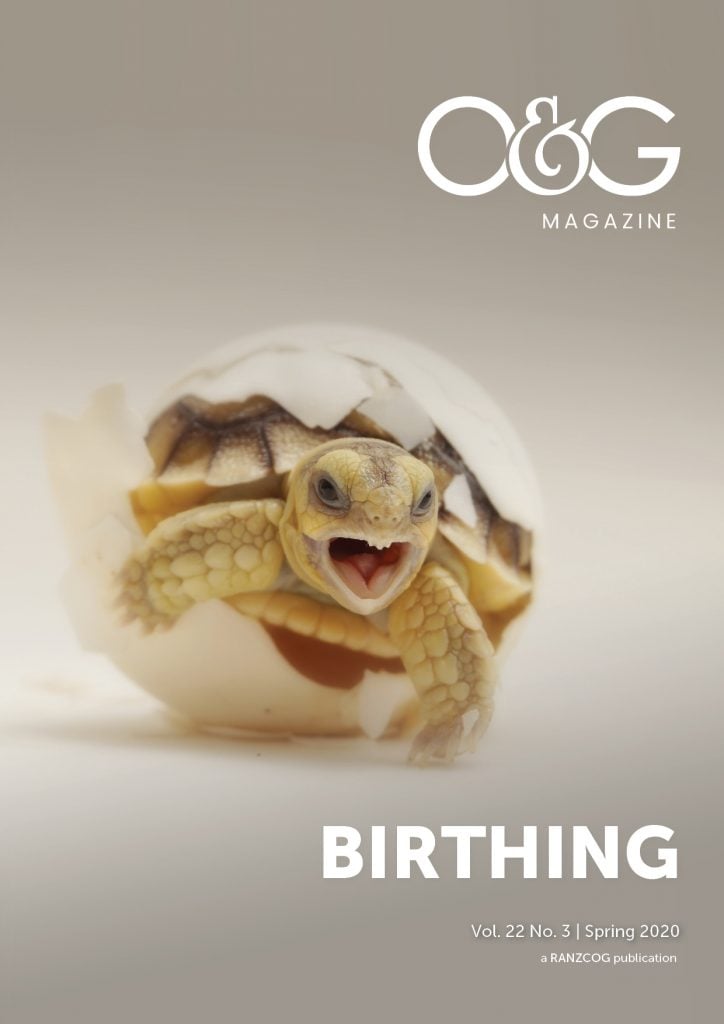Meeting the needs of women is a hallmark of a high-quality maternity system. A decade of Australian maternity service reviews have highlighted that women want increased access to models of care, including homebirth.1 2 Despite this, the rates of homebirth in Australia are low. In 2018, 0.3% of Australian women gave birth at home.3 In contrast, 3.4% in New Zealand4 and approximately 2% of women in the UK5 give birth at home each year. Variation in homebirth rates also differ across Australia with the lowest rates at 0.1% of all births in NSW, and the highest rates at 0.9% in Tasmania.6 Over the past nine years, the rates of homebirth in some jurisdictions (Western Australia, Victoria and South Australia) have fallen, while in others (Queensland, the ACT and Tasmania) have increased.7 The drivers of variation and change in rates are complex but can be broadly classified as relating to demand, supply and/or access.8
The majority of women access homebirth options through engaging with privately practising midwives (PPMs). The latest figures, from 2015, identified that there were 241 midwives across the country who attended homebirths as a primary midwife.9 The current numbers of PPMs are unknown. Accessing a PPM in Australia is expensive. Medicare is available for antenatal and postnatal care, but not the birth. The average out of pocket cost for women giving birth at home with a PPM is around $5000. While the majority of PPMs practice in accordance with the ACM guidelines for consultation and referral, individual PPMs may vary in their inclusion criteria with regard to the provision of a homebirth service. This can create additional variation in accessibility of homebirth services for women.
All states and territories in Australia, excluding Queensland, also offer public homebirth options (16 in total), albeit to only a small number of suitable women. For example, in Victoria where approximately 78,000 women give birth each year, only two public Victorian maternity services offer homebirth. Public homebirth models are available only to women with a low-risk pregnancy who live within a defined travel distance to the health service. There are also variations in both the eligibility criteria and requirements of different programs. For example, some public programs exclude nulliparous women, those wishing to have a waterbirth or physiological third stage. For all women accessing a public homebirth, the cost of their birth is free, and they are cared for by midwives employed by the health service.
Concerns relating to the safety of women and their babies are commonly cited as barriers to offering or supporting the availability of homebirth services. These concerns pertain to who is most suitable to give birth at home, who should provide the care and the outcomes when there is a need for urgent medical care that cannot be provided at home.
The evidence for whom homebirth is safest for is now well established. Large population-based studies and subsequent systematic reviews and metanalyses consistently demonstrate that planned homebirth is a safe option for women with low-risk pregnancies.10 11 12 A recent meta-analysis of women with low-risk pregnancies in high-income countries confirmed that planned homebirth was not associated with an increase in perinatal death and was associated with a lower rate of some maternal morbidities and obstetric interventions.13 Specifically, low-risk women, those free of medical complications, with a healthy singleton pregnancy that have not given birth before by caesarean in the past do not experience a significantly higher rate of stillbirth (Odds Ratio[OR] 0.94; 95% CI 0.76–1.17) or neonatal death (OR 1.00; 95% CI 0.78–1.27) when compared with similar women who plan a hospital birth. Low-risk women planning a homebirth experienced significantly lower rates of severe perineal trauma (OR 0.57; 95% CI 0.40–0.81) and postpartum haemorrhage (OR 0.73; 95%CI 0.55–0.96) and are more likely to have a normal vaginal birth (OR 2.93; 95%CI 2.13–4.03).14
The other key concern regarding the safety of homebirth relates to the hospital transfer. It is generally considered that women or babies requiring a transfer to hospital in labour from a planned homebirth are at most risk of adverse outcomes.15 Public homebirth models across the country stipulate women must live within 30 minutes of the health service16 to ensure fast access to emergency obstetric interventions if required. Studies of low-risk women planning homebirth report intrapartum transfer rates ranging from 9% up to 28%.17 18 19 20 21 When nulliparous and parous women are considered separately, the rate of intrapartum transfer ranges from 22% to 52% for nulliparous women and from 3% to 11% for parous women.22 23 24 25 26 The rates of postpartum transfers are lower again with between 3–7% of women or their babies requiring transfer following a planned homebirth.27 28 29 30 31 Despite the higher rates of transfer experienced by nulliparous women, they do not experience higher rates of adverse outcomes.32
Reasons for transfers include for pain relief, slow progress in labour, maternal preference or for potentially urgent reasons. A review of transfers across four Nordic countries identified that around 4% of planned homebirths result in a potentially urgent transfer, contributing to just over one quarter of all transfers women experienced.33 Reassuringly, a recent Victorian study of 3200 planned homebirths in low-risk women did not identify an increase in the risk of adverse maternal and perinatal outcomes when transfer was required. 34
Homebirth has largely been considered an alternative maternity care option, relegated to the shadows. It is a topic that polarises people, where poor outcomes are the subject of media headlines and social commentary. When homebirths go well, which the majority do, they are invisible to the wider health system. It is therefore understandable that it has been challenging to increase access to homebirth in Australia. Over the past decade, there has been significant gains to address these concerns. We now have a large body of evidence, including Australian-specific data,35 36 to define who homebirth is suitable for and the outcomes of women and their babies. The growth of publicly funded models across the country, and reassuring evaluations,37 38 also further demonstrate the safety of this model of care. Ultimately, the goal should be to ensure that all women who are suitable and would like a homebirth can access safe evidence-based care, thus bringing homebirth out into the mainstream.
References
- Commonwealth of Australia. Improving maternity services in Australia: the report of the Maternity Services Review. Canberra, 2009. Available from: www1.health.gov.au/internet/publications/publishing.nsf/Content/msr-report
- COAG Health Council. Woman-centred care: Strategic directions for Australian maternity services. 2019. Available from: www.health.gov.au/resources/publications/woman-centred-care-strategic-directions-for-australian-maternity-services
- AIHW. Australia’s mothers and babies 2018—in brief Canberra: Australian Institute for Health and Welfare; 2020. Available from: www.aihw.gov.au/reports/mothers-babies/australias-mothers-and-babies-2018-in-brief/contents/table-of-contents.
- Ministry of Health. Report on Maternity 2017. Wellington, 2019. Available from: www.health.govt.nz/publication/report-maternity-2017
- Office for National Statistics. Birth characteristics in England and Wales: 2017. UK, 2019. Available from: www.ons.gov.uk/releases/birthcharacteristicsinenglandandwales2017
- AIHW. Australia’s mothers and babies 2018—in brief Canberra: Australian Institute for Health and Welfare; 2020. Available from: www.aihw.gov.au/reports/mothers-babies/australias-mothers-and-babies-2018-in-brief/contents/table-of-contents.
- AIHW. Australia’s mothers and babies 2018—in brief Canberra: Australian Institute for Health and Welfare; 2020. Available from: www.aihw.gov.au/reports/mothers-babies/australias-mothers-and-babies-2018-in-brief/contents/table-of-contents.
- Australian Commission on Safety and Quality in Health Care. Medical practice variation: background paper. Sydney, 2013. Available from: www.safetyandquality.gov.au/sites/default/files/migrated/Medical-Practice-Variation-Background-Paper-Oct-2013.pdf
- AIHW. Nursing and midwifery workforce 2015. Cat. no. WEB 141. Canberra: Australian Institute of Health and Welfare; 2016.
- Scarf VL, et al. Maternal and perinatal outcomes by planned place of birth among women with low-risk pregnancies in high-income countries: A systematic review and meta-analysis. Midwifery. 2018;62:240-55.
- Hutton EK, et al. Perinatal or neonatal mortality among women who intend at the onset of labour to give birth at home compared to women of low obstetrical risk who intend to give birth in hospital: A systematic review and meta-analyses. EClinicalMedicine. 2019;14:59-70.
- Reitsma A, et al. Maternal outcomes and birth interventions among women who begin labour intending to give birth at home compared to women of low obstetrical risk who intend to give birth in hospital: A systematic review and meta-analyses. EClinicalMedicine. 2020:100319.
- Scarf VL, et al. Maternal and perinatal outcomes by planned place of birth among women with low-risk pregnancies in high-income countries: A systematic review and meta-analysis. Midwifery. 2018;62:240-55.
- Scarf VL, et al. Maternal and perinatal outcomes by planned place of birth among women with low-risk pregnancies in high-income countries: A systematic review and meta-analysis. Midwifery. 2018;62:240-55.
- Blix E, et al. Transfer to hospital in planned home births: a systematic review. BMC Pregnancy Childbirth. 2014;14:179.
- Victorian Department of Health. Implementing a public home birth program: Guidance for Victorian public health services. 2015. Available from: www2.health.vic.gov.au/about/publications/policiesandguidelines/implementing-public-home-birth-program
- Birthplace in England Collaborative Group. Perinatal and maternal outcomes by planned place of birth for healthy women with low risk pregnancies: the Birthplace in England national prospective cohort. BMJ. 2011;343:d7400.
- Bolten N, et al. Effect of planned place of birth on obstetric interventions and maternal outcomes among low-risk women: a cohort study in the Netherlands. BMC Pregnancy and Childbirth. 2016;16(1):329.
- Davies-Tuck M, et al. Planned private homebirth in Victoria 2000-2015: a retrospective cohort study of Victorian perinatal data. BMC Pregnancy and Childbirth. 2018;18(1):357.
- Blix E, et al. Transfers to hospital in planned home birth in four Nordic countries- a prospective cohort study. Acta Obstet Gynecol Scand. 2016;95:420-8.
- Maimburg RD. Homebirth organised in a caseload midwifery model with affiliation to a Danish University hospital-a descriptive study. Sex Reprod Healthc. 2018.
- Birthplace in England Collaborative Group. Perinatal and maternal outcomes by planned place of birth for healthy women with low risk pregnancies: the Birthplace in England national prospective cohort. BMJ. 2011;343:d7400.
- Bolten N, et al. Effect of planned place of birth on obstetric interventions and maternal outcomes among low-risk women: a cohort study in the Netherlands. BMC Pregnancy and Childbirth. 2016;16(1):329.
- Davies-Tuck M, et al. Planned private homebirth in Victoria 2000-2015: a retrospective cohort study of Victorian perinatal data. BMC Pregnancy and Childbirth. 2018;18(1):357.
- Blix E, et al. Transfers to hospital in planned home birth in four Nordic countries- a prospective cohort study. Acta Obstet Gynecol Scand. 2016;95:420-8.
- Maimburg RD. Homebirth organised in a caseload midwifery model with affiliation to a Danish University hospital-a descriptive study. Sex Reprod Healthc. 2018.
- Birthplace in England Collaborative Group. Perinatal and maternal outcomes by planned place of birth for healthy women with low risk pregnancies: the Birthplace in England national prospective cohort. BMJ. 2011;343:d7400.
- Bolten N, et al. Effect of planned place of birth on obstetric interventions and maternal outcomes among low-risk women: a cohort study in the Netherlands. BMC Pregnancy and Childbirth. 2016;16(1):329.
- Davies-Tuck M, et al. Planned private homebirth in Victoria 2000-2015: a retrospective cohort study of Victorian perinatal data. BMC Pregnancy and Childbirth. 2018;18(1):357.
- Blix E, et al. Transfers to hospital in planned home birth in four Nordic countries- a prospective cohort study. Acta Obstet Gynecol Scand. 2016;95:420-8.
- Maimburg RD. Homebirth organised in a caseload midwifery model with affiliation to a Danish University hospital-a descriptive study. Sex Reprod Healthc. 2018.
- Scarf VL, et al. Maternal and perinatal outcomes by planned place of birth among women with low-risk pregnancies in high-income countries: A systematic review and meta-analysis. Midwifery. 2018;62:240-55.
- Blix E, et al. Transfers to hospital in planned home birth in four Nordic countries- a prospective cohort study. Acta Obstet Gynecol Scand. 2016;95:420-8.
- Davies-Tuck M, et al. Planned private homebirth in Victoria 2000-2015: a retrospective cohort study of Victorian perinatal data. BMC Pregnancy and Childbirth. 2018;18(1):357.
- Davies-Tuck M, et al. Planned private homebirth in Victoria 2000-2015: a retrospective cohort study of Victorian perinatal data. BMC Pregnancy and Childbirth. 2018;18(1):357.
- Homer C, et al. Maternal and perinatal outcomes by planned place of birth in Australia 2000-2012: A linked popoulation data study. BMJ Open. 2019;9(10):e029192.
- Scarf VL, et al. Evaluation of Publicly Funded Homebirth Trial in the ACT. In: Burnet Institute M, editor. 2020.
- White C, et al. A pathway to establish a publicly funded home birth program in Australia. Women Birth. 2019;19:30055-1.







Leave a Reply